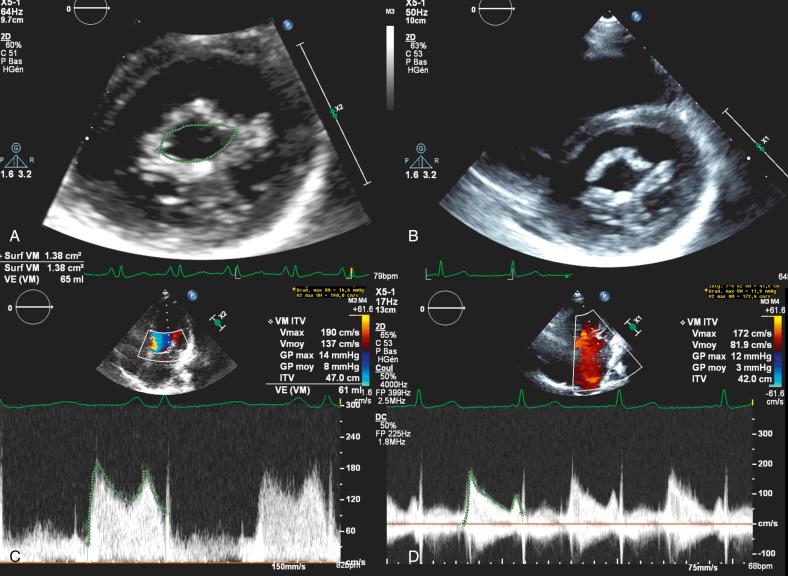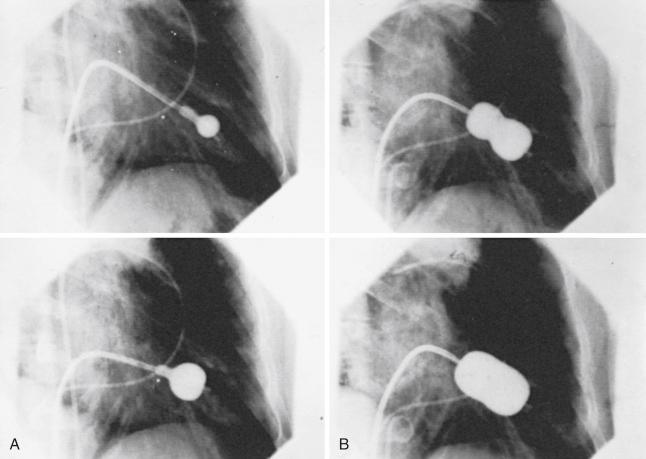Physical Address
304 North Cardinal St.
Dorchester Center, MA 02124
The efficacy, safety, and applicability of the Inoue balloon technique make it the point of reference for percutaneous mitral commissurotomy (PMC).
Technical experience is essential for the safety of the procedure and the selection of patients.
PMC provides good immediate and long-term clinical results and carries a low risk when performed by experienced teams.
Patient selection is based on anatomy and other predictors of outcome.
PMC is the treatment of choice for patients with favorable characteristics.
The decision must be individualized for other patients, and PMC and valve replacement should be considered complementary techniques.
Until the first publication by Inoue and coworkers describing percutaneous mitral commissurotomy (PMC) in 1984, open chest surgery was the only treatment for patients with mitral stenosis. Since then, many patients with a wide range of clinical conditions have been treated, enabling efficacy and risk to be assessed.
Acting in the same way as surgical commissurotomy, PMC opens the fused commissures ( Fig. 51.1 ). PMC is of little or no help in cases of restricted valvular mobility caused by valve fibrosis or severe subvalvular disease, or in cases of degenerative calcified mitral annulus ( ![]() ). The techniques and devices used for PMC have varied over time. Currently, the transvenous or transseptal approach using the Inoue balloon is largely predominant.
). The techniques and devices used for PMC have varied over time. Currently, the transvenous or transseptal approach using the Inoue balloon is largely predominant.

The transvenous, or antegrade, approach is performed through the femoral vein. Transseptal catheterization is the crucial first step of the procedure, usually performed under fluoroscopic guidance and continuous pressure monitoring. Echocardiography is not used systematically during transseptal catheterization, but it can enhance its safety, especially for less experienced operators and when technical difficulties are encountered (e.g., severe anatomic distortion). Intracardiac echocardiography may be used without additional operators or general anesthesia, although the price of the device seriously limits its use.
In experienced centers, the whole procedure can be performed using a single venous approach and noninvasive monitoring, which reduces the risk of vascular complications, discomfort, and cost. The retrograde transatrial approach has been abandoned due to its complexity.
The Inoue technique was the first to be described, and extensive experience has been acquired by many groups worldwide. The Inoue balloon, composed of nylon and rubber micromesh, is self-positioning and pressure extensible. It is large (24 to 30 mm in maximal diameter) and has a low profile (4.5 mm balloon diameter). The balloon has three distinct parts, each with a specific elasticity, enabling the parts to be inflated sequentially. This sequence allows fast, stable positioning across the valve. Each of the four balloon sizes (i.e., 24, 26, 28, and 30 mm) is pressure dependent, and its diameter can be varied by up to 4 mm, as required by circumstances.
After transseptal catheterization, a stiff guidewire is introduced into the left atrium. The femoral entry site and the atrial septum are dilated with a rigid dilator (14 Fr), and the balloon is introduced into the left atrium. Inoue recommended the use of a stepwise dilation technique under echocardiographic guidance. Balloon size is chosen according to patient’s height and then inflated sequentially. First, the distal portion is inflated with 1 or 2 mL of diluted contrast; it acts as a floating balloon catheter when crossing the mitral valve. Second, the distal part is further inflated, and the balloon is pulled back into the mitral orifice. Inflation next occurs at the level of the proximal part and then in the central portion, with the disappearance of the central waist at full inflation ( Fig. 51.2 ). The first inflation is performed 4 mm below the maximal balloon size, and the balloon size is increased in 1-mm increments. The balloon is then deflated and withdrawn into the left atrium. If mitral regurgitation (assessed by color Doppler echocardiography) has not increased by more than one grade and the valve area is less than 1 cm 2 /m 2 of body surface area, the balloon is advanced again across the valve, and PMC is repeated with a balloon diameter increased by 1 mm. The criterion for ending the procedure is an adequate valve area or an increase in the degree of mitral regurgitation.

The double-balloon technique has been described extensively and long-term results are comparable to those of the Inoue balloon. The multitrack system, which is a refinement of the double-balloon technique, and the metallic commissurotome have a limited use.
Become a Clinical Tree membership for Full access and enjoy Unlimited articles
If you are a member. Log in here